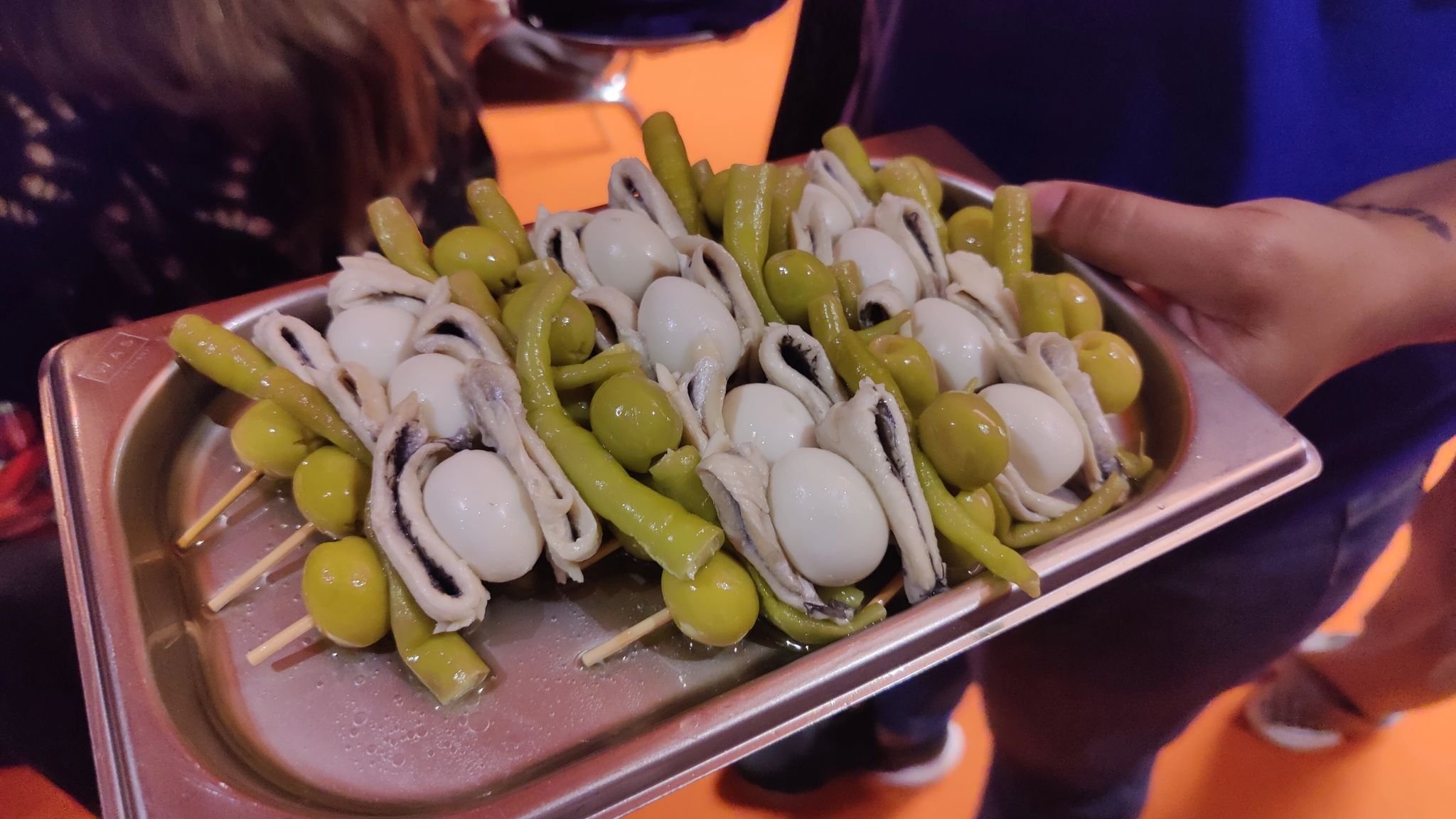What makes game localization different from other digital products?
This week, a magical moment finally happened, one that I had personally been waiting for a long time. That moment was the inauguration of the Madrid Chapter of Women in Localization!
Women in Localization is an organization I got to know more deeply several years ago, mainly in the pre-COVID era when I was working full-time in Barcelona. I always thought it had fascinating goals and friendly events (those croquetas parties at Catacroquet… ). On one hand, it focuses on empowering women through mentorship, knowledge sharing, and more to help them succeed in localization. On the other hand, it promotes diversity and inclusion; here, everyone is welcome regardless of gender. What binds us together is our passion for localization, not what might divide us. I’ve always found it to be a welcoming community, and that’s why, when I heard a few months ago about the plans to open a chapter in Madrid, I was quite happy.
As a native of Madrid who’s spent many years in the localization world, I’ve been eagerly anticipating it, especially considering that Madrid has a large community of localization professionals. I’m sure this community will play a big role in helping the chapter meet its goals. At the inauguration party, I had the chance to meet new people and reconnect with some I hadn’t seen in years, nearly 20 years, actually! That’s about how long it’s been since I left Lionbridge, where I worked for over a decade as head of the Localization QA team.
During the event, as I was reconnecting with colleagues from my “previous life,” someone asked a really good question: “What’s different about localizing a video game compared to any other digital product?” It’s a great question because while many best practices for localization also apply to video games, there are definitely unique aspects that make games special from both a localization and LQA perspective.
And there I was, enjoying some Gildas sponsored by the wonderful people at LocCapture, giving a few insights into these differences…. But on the drive home, I thought, “Hmm, there’s more to explore here,” so here we go. Below is a summary of what I consider the five main differences you’ll encounter when localizing a video game compared to other types of software.
Clich HERE to download the image
Clich HERE to download the image
1. Narrative and Emotional Complexity
Games are all about telling stories and creating emotional connections with players. Localization goes beyond just translating the words; we want to make the story and emotions work for players in different countries. For example, in The Witcher 3, Geralt’s sarcastic, dry humor had to be changed to fit how people speak other languages. This wasn’t just about translating the jokes but making sure his personality still felt right and natural for players in different regions
To learn more about the challenges of localizing a game of this scale, I recommend these two articles: one from Terra Translations, "The Localization of The Witcher: Accents and Cultural Connections", and another by Abraham Martinez from GlobaLexicon, "How CD Projekt Red Faced the Localization Process for Games", which both offer a detailed look at the difficulties faced by the localization team working on these title.
On the other hand, apps and websites don’t deal with this kind of emotional complexity. Their focus is more on usability and ensuring that instructions or UI elements are clear and easy to understand, which makes the localization process much more straightforward.
2. Culturalization and Inclusivity
Localization for games often requires deep cultural adaptation. Players want to see elements of their own culture in the games they play. A great example of this is Animal Crossing: New Horizons. The game adjusts in-game events based on regional preferences, such as celebrating Otsukimi (Moon Viewing Festival) for Japanese players while incorporating Western holidays like Easter. This level of cultural relevance helps players feel more connected to the game.
This video analyzes how the game has been adapted from a localization perspective.
In comparison, apps and websites don’t need this level of cultural immersion. Sure, they localize currencies or date formats, just to mention a couple of typical internationalization elements adapted… but they don’t need to weave cultural traditions into their core functionality.
3. Audio Localization
Games come with a complex mix of voiceovers, music, subtitles and sound effects that must be adapted for different regions. Genshin Impact, for instance, localizes voice acting across several languages, ensuring that each actor captures the same emotional depth as the original cast. Even sound effects may need to be localized. In PUBG the sound of gunfire was adapted in China to meet local content regulations regarding violence
Continuing with the example of Animal Crossing, I would recommend watching this very interesting video from Polygon to understand more about how complex everything related to adapting music or audio elements in general can be
Now, if you compare that with most of the digital software out there, well, most apps and websites don’t deal with this level of multimedia adaptation.
4. Player Expectations
Gamers have high expectations when it comes to localization. They want the experience to feel native and quickly notice any flaws when the localization doesn't quite match up.
Final Fantasy is one of the most iconic and influential role-playing games (RPGs) in video game history. Released in 1997 by Square Enix, the game has sold millions of copies globally and has a dedicated fanbase that knows the characters, story, and lore inside out. This strong connection to the game’s world has made Final Fantasy a game that fans are deeply passionate about. However, the game has also been subject to numerous complaints about the quality of its translation over the years.
In different language versions, translation issues such as awkward phrasing and grammatical errors often cause confusion for players. For example, there were occasions that included poorly translated instructions during key boss fights, where mistranslations led players to make incorrect decisions, negatively impacting their progress.
Source: Dogmagazine
User expectations are typically lower for non-gaming digital products. Users are generally satisfied as long as the product functions well and is easy to navigate in their language. There’s less pressure to maintain a high emotional or cultural immersion level.
5. LiveOps and Ongoing Content
LiveOps in games adds a significant layer of complexity. Titles like PUBG or Homescapes, to name a couple that frequently release new content tied to real-world events, are very complicated to localize (and test!) This kind of content, often themed around holidays or special occasions, needs to be localized quickly and accurately to ensure players across the globe can enjoy the updates simultaneously. Localization teams often work in real-time (or almost, in sprints) to meet tight deadlines, adapting not just the text but also cultural references, event details, and any region-specific elements so that the experience feels relevant and engaging for players everywhere
Game developer Playrix creating special content for the celebration of the Lunar New Year
PUBG created a special event to celebrate the Chinese New Year:
In contrast, apps and websites release updates on a more predictable schedule, often focused on adding new features rather than adapting to real-world events. Localization for these products is more about keeping the user interface up to date, with far less pressure for real-time cultural alignment.
Conclusion
The inauguration of the Madrid Chapter of Women in Localization was not only a much-anticipated moment for me personally but also an important opportunity to reconnect with professionals in the localization industry. The gathering allowed us to explore deep conversations about localization (and surprise , surprise, AI was not the only topic we talked!). This event sparked the idea for this blog post, which summarizes the main challenges in localizing video games.
While localization fundamentals are the same across software, video games stand out for their unique challenges. There are elements complicated to deal with such as the narrative arc, or syncing voiceovers with character lip movements, timing subtitles perfectly so they appear in the right scene at the right time … it’s all those little things that when I compare this to the straightforward localization of the apps on my phone, I can't help but think how cool, but also how incredibly complex, game localization really is!
Here's to an exciting future for the Madrid Chapter! I'm looking forward to seeing the amazing things they’ll accomplish!
Cheers with my asturiana favorita Carmen Aviles from the Madrid Chapter Leadership team
@yolocalizo


























Localizability has always been a challenge small issues in source content often lead to big problems later in translation. In this post, I explore how AI is giving localization teams a powerful new way to improve source quality, reduce friction, and create better content for every market right from the start.